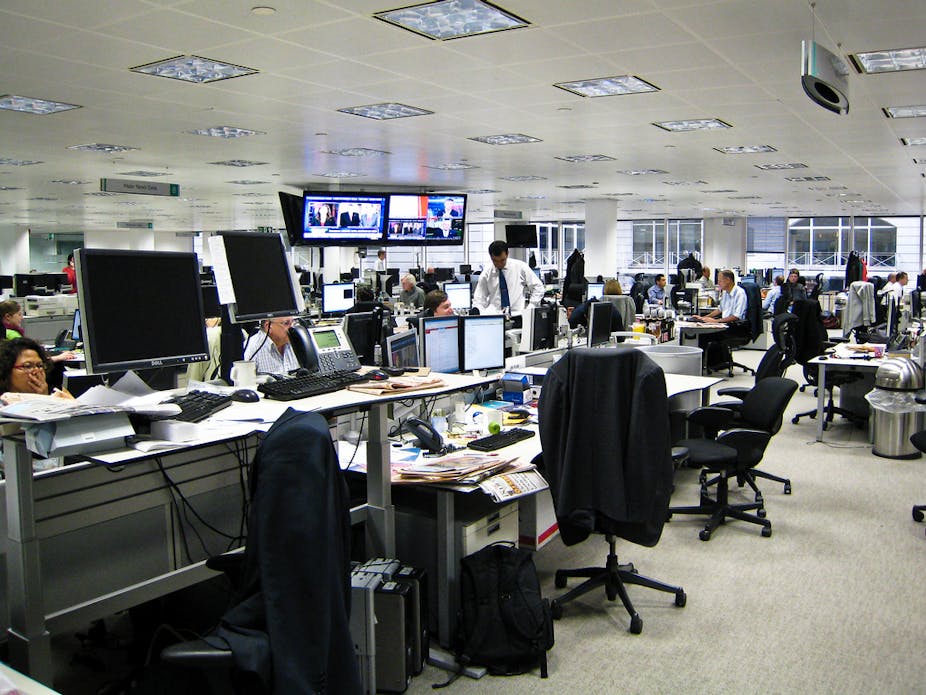Fairfax reporters will be expected to file stories throughout the day into an internal “wire” that will hold copy for use on any platform - print, online, tablet, social media and mobile, under a blueprint unveiled this morning.
And for the first time, editors-in-chief at The Age, The Sydney Morning Herald and The Canberra Times will be responsible for content across all platforms, not just print. “The old divide between print and digital has been dismantled,” Garry Linnell, Editorial Director of Fairfax Metro Media, said in a note to staff. “No more silos. One leadership for one integrated newsroom.”
Although editors will be appointed to each of the five platforms to focus exclusively on those areas, reporters will no longer report directly to them. Instead they will work with “Topic Editors”, who have no loyalty to any one platform.
Topic-based reporting teams will be arranged around national subjects, such as federal politics, business, environment and technology, and a smaller selection of local subjects, such as state politics, transport and sport.
Mr Linnell said Fairfax “will build more national teams around topics. This allows us to better avoid duplication, to share more of our stories across the country that interest a national audience.
"Topic-based reporters will be expected to file through the day to meet audience needs. Their copy will flow through a Fairfax ‘wire’ – visible and accessible to all Metro newsrooms. Copy will be edited, checked, headed and made ready. It can be used on any platform … This reverses the ‘print-first’ approach that has dictated production processes for generations. Instead of copy being handled multiple times, it will be produced once.”
Almost 100 editorial staff across Fairfax contributed to the blueprint.
Catharine Lumby, Professor of Journalism and Centre Director of the Journalism and Media Research Centre at the University of New South Wales, said the restructure was “the right move, but it should have happened a decade ago. The internet is not new. That train has been coming down the track forever.
"The people who should have been dealing with it - their incentive was the share price. Follow the money. The people at Fairfax who really care about journalism - and there are so many - have not been involved in the money-making side.”
The Australian mainstream media had been asset-stripped by senior executives whose pay packets were tied to share prices and refused to confront the big issues, she said.
Professor Lumby said she rated Mr Linnell very highly. “He’s a journalist and he gets it, and he’s an excellent person to be in charge of this process. Under someone like him, they can turn things around to an extent. But my fear is that we’ll get people like him replaced by people digging iron ore out of the ground,” she said, in a reference to the push by billionaire and major Fairfax shareholder, Gina Rinehart, for seats on the board.
“If you look around internationally, Australian media is so, so far behind on this,” Professor Lumby added. “They have been asleep for a decade, and because they thought they had the market cornered. They haven’t just let down their business model, they’ve let down Australia when it comes to good information that Australians can access.”
Fairfax last week announced it would shed 1,900 staff over the next three years as part of the restructure. About 20% will be journalists and another 20% staff at the two printing plants, at Chullora in Sydney and Tullamarine in Melbourne, that it will close. The company will introduce a metered paywall system for its digital content next year.
News Ltd also announced major cuts as part of a large restructure, but declined to specify how many jobs would go. Speculation is that as many as 1,500 positions will disappear in the next two years. The company has already reportedly made 100 staff redundant - 70 across its digital platforms and the rest from regional Queensland mastheads.

